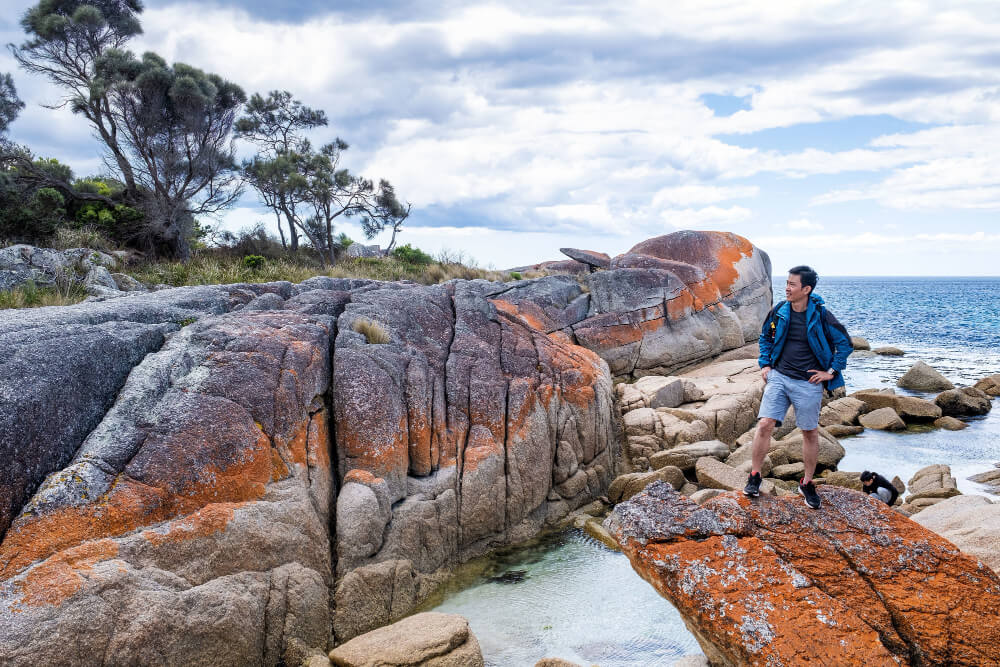The Fiordland National Park, located in the South Island of New Zealand, is a breathtakingly beautiful destination that is a must-do for nature lovers. Covering over 1.2 million hectares, this UNESCO World Heritage Site is home to an array of unique flora and fauna, as well as stunning fiords, waterfalls, and mountains.
Exploring this pristine wilderness offers a chance to immerse oneself in the natural beauty of New Zealand and experience some of the most awe-inspiring landscapes on earth.
One of the most impressive features of Fiordland National Park is its dramatic fiords, carved out by glaciers over thousands of years. Milford Sound, Doubtful Sound, and Dusky Sound are among the most famous of these fiords, offering visitors the opportunity to cruise through their crystal-clear waters and marvel at their sheer cliffs and cascading waterfalls.
These fiords are not only visually stunning but also provide a unique habitat for a variety of marine life, including dolphins, seals, and penguins.
In the next part of this article, we will delve deeper into the diverse ecosystems found within Fiordland National Park, from its ancient forests and mossy valleys to its alpine meadows and crystal-clear lakes.
We will also discuss the activities available to visitors, such as hiking, kayaking, and wildlife watching, as well as the best times of year to visit this extraordinary destination.

Plan your visit in advance
When exploring Fiordland National Park, it is important to plan your visit in advance to make the most of your time there.
The park is vast and offers a wide range of activities, so having a clear itinerary will help you prioritise what you want to see and do. Make sure to book accommodations and tours ahead of time, especially during peak tourist seasons, to avoid missing out on key experiences.
Research the different attractions in the park and decide which ones are a priority for you to ensure you don’t miss out on anything during your visit.
Be prepared for variable weather conditions
Fiordland National Park is known for its unpredictable weather patterns, so it is essential to come prepared for all types of weather conditions.
Make sure to pack layers of clothing, including waterproof jackets and sturdy hiking boots, to stay comfortable and dry during your explorations.
It is also a good idea to carry a map, compass, and extra food and water in case you encounter unexpected delays or challenges while out in the wilderness. Being prepared for changing weather will ensure that you can fully enjoy your time in the park without any disruptions.
Respect the environment and wildlife
As a nature lover exploring Fiordland National Park, it is important to respect the environment and wildlife that call the park home.
Stay on designated trails to minimise your impact on the fragile ecosystem and avoid disturbing plants, animals, and their habitats.
Avoid feeding wildlife and keep a safe distance from any animals you encounter to protect both their safety and your own.
By being mindful of your actions and showing respect for the natural environment, you can help preserve the beauty and biodiversity of Fiordland National Park for future generations to enjoy.
Take advantage of guided tours and activities
Guided tours and activities are a great way to enhance your experience while exploring Fiordland National Park.
Whether you choose to go on a boat cruise through the fjords, hike along scenic trails with a knowledgeable guide, or take a guided kayaking excursion on the pristine waters of the park, these organised experiences can provide you with valuable insights and unique perspectives on the area.
Consider joining a guided tour to learn more about the history, geology, and wildlife of the park while making the most of your time there.
Pros of Exploring the Fiordland National Park: A Must-Do for Nature Lovers
- Breathtaking Scenery: Fiordland National Park is renowned for its stunning natural beauty.
From cascading waterfalls and majestic mountains to crystal-clear lakes and lush forests, this park offers a visual feast for nature lovers.
- 2. Unique Wildlife: The park is home to a diverse range of flora and fauna, including the endangered kiwi bird and the rare takahe.
Exploring the park gives visitors the opportunity to spot these unique species in their natural habitat.
- Outdoor Activities: Fiordland National Park is a paradise for outdoor enthusiasts. Visitors can enjoy a wide range of activities such as hiking, kayaking, and scenic cruises, allowing them to immerse themselves in the park’s rugged natural environment.
- Fjords and Waterfalls: The park is famous for its deep fjords and spectacular waterfalls. Milford Sound and Doubtful Sound are must-see attractions, and witnessing these natural wonders up close is an unforgettable experience.
- Remote and Tranquil Setting: Fiordland National Park offers a sense of peaceful isolation, allowing visitors to escape the hustle and bustle of everyday life.
The park’s remote location and unspoiled landscapes make it a perfect destination for those seeking serenity in nature.
Cons of Exploring the Fiordland National Park: A Must-Do for Nature Lovers
- Weather Challenges: The Fiordland National Park is known for its unpredictable weather conditions.
Sudden rainstorms, strong winds, and fog can hinder your outdoor activities and limit your visibility of the park’s natural beauty.
- Remote Location: The park is located in a remote area, making it difficult to access for some travellers.
Limited transportation options and long travelling distances can be a drawback for those looking to explore the Fiordland National Park.
- Limited Accommodation: Due to its remote location, the Fiordland National Park has limited accommodation options.
This can make it challenging to find suitable places to stay, especially during peak tourist seasons.
- Wildlife Hazards: While encountering wildlife is part of the attraction of visiting a national park, it also comes with potential hazards.
The Fiordland National Park is home to animals like sandflies, keas, and possums, which can pose a threat to visitors if proper precautions are not taken.

Conclusion
exploring Fiordland National Park in New Zealand is an unparalleled experience for nature lovers and outdoor enthusiasts alike.
Its breathtaking scenery, unique wildlife, and abundance of outdoor activities make it a must-visit destination for those seeking to immerse themselves in the beauty of nature.
From cruising through dramatic fiords to hiking in ancient forests, there’s something for everyone to enjoy in this UNESCO World Heritage Site.
However, it’s essential to be prepared for the challenges that come with exploring such a remote and wild environment.
Unpredictable weather conditions, limited accommodation options, and encounters with wildlife require visitors to plan ahead and approach their journey with caution and respect for the natural surroundings.
Despite these challenges, the rewards of exploring Fiordland National Park are boundless.
Whether marvelling at cascading waterfalls, spotting rare bird species, or simply revelling in the tranquillity of its remote setting, every moment spent in Fiordland is sure to leave a lasting impression.
So, for those seeking adventure, beauty, and a deep connection with nature, Fiordland National Park is indeed a must-do destination.
FAQs
What are the top activities and hikes in Fiordland?
Fiordland is renowned for its incredible hiking and walking opportunities.
Some of the top hikes include the Milford Track, Kepler Track, and Routeburn Track – three of New Zealand’s “Great Walks”.
There are also many excellent day hikes like the Key Summit, Mirror Lakes, and Lake Marian. Other popular activities include kayaking, scenic cruises, and scenic flights over the dramatic landscapes.
Where can I see wildlife in Fiordland?
Fiordland is home to unique wildlife like the Fiordland crested penguin.
The best places to spot these penguins are in the fiords of Piopiotahi/Milford Sound, Patea/Doubtful Sound, and other parts of the national park, especially during the breeding season from July to November.
How big is Fiordland National Park?
Fiordland National Park covers over 1.2 million hectares, making it one of the largest national parks in New Zealand.
It encompasses a vast wilderness of mountains, lakes, fiords, and rainforests.
What is the weather like in Fiordland?
Fiordland is known for its high rainfall, with the region receiving over 7 metres of rain per year on average.
Visitors should be prepared for wet weather at any time of year.
However, the region’s dramatic landscapes are shaped by this abundant rainfall.
How long should I spend in Fiordland?
Most visitors recommend spending at least a few days in Fiordland to fully experience the region.
While a day trip to Milford Sound is possible, staying for several nights allows you to explore more of the park’s hikes, activities, and natural wonders.
Hiking one of the Great Walks typically takes 3-4 days.


